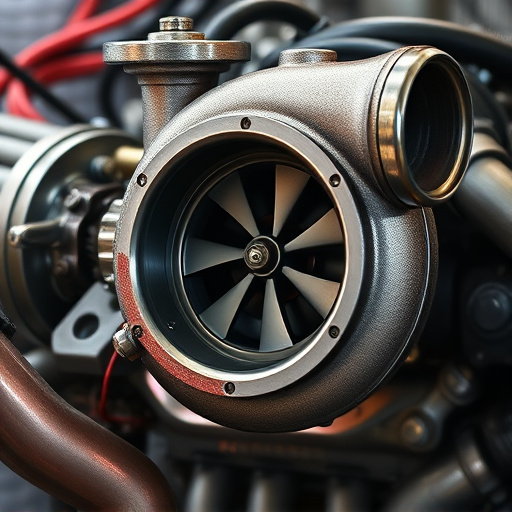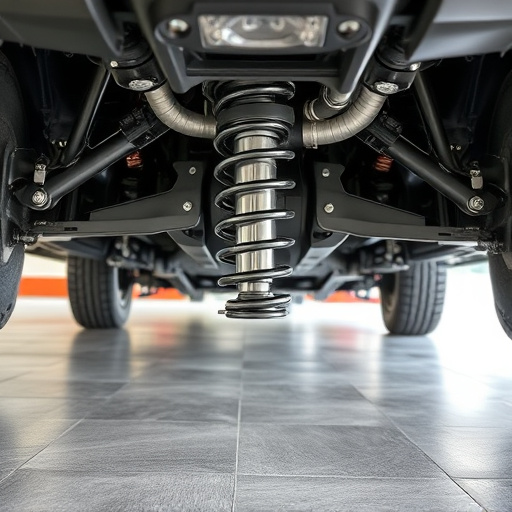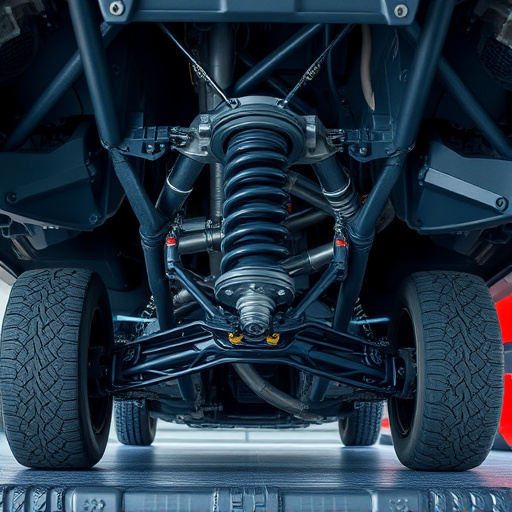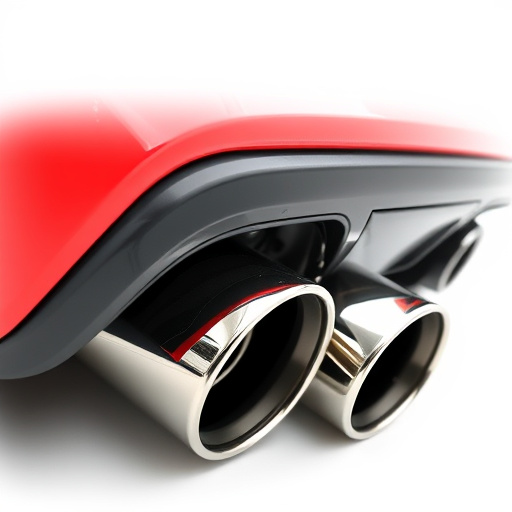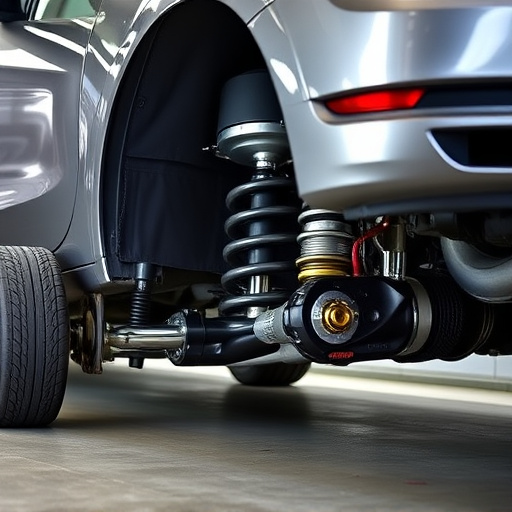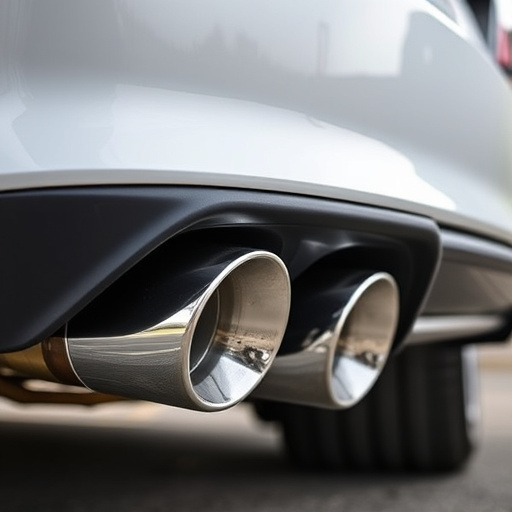A turbocharger system dramatically enhances engine performance by leveraging exhaust gas flow to spin a turbine, which drives a compressor to intake and compress air. This results in increased fuel burn, higher power, and torque across RPM ranges compared to naturally aspirated or supercharged engines. Key components like housing, bearings, oil supply, and wastegate ensure efficient operation, while enhancements such as performance exhaust systems, high-flow filters, and upgraded brakes further optimize engine performance and vehicle handling. Choosing the right turbocharger system requires understanding engine specifications, considering intake and exhaust components, and balancing power gains with reliability, focusing on factors like size, compression ratio compatibility, and cooling needs for durable high-performance engines.
Unleash the power of a turbocharger system in your tuned engines and performance builds. This high-performance component can significantly boost horsepower and torque, transforming your vehicle’s overall performance. In this article, we’ll explore the fundamentals of turbocharger systems, their undeniable advantages, and crucial factors to consider when choosing the perfect fit for optimal performance. Get ready to delve into the world of turbocharged engines.
- Understanding Turbocharger Systems: The Basics and Key Components
- Advantages of Using Turbochargers for Tuned Engines and Performance Builds
- Choosing the Right Turbocharger System: Factors to Consider for Optimal Performance
Understanding Turbocharger Systems: The Basics and Key Components
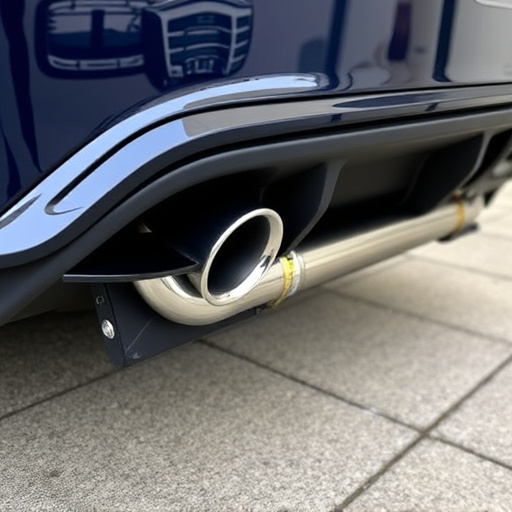
A turbocharger system is a forced induction device that enhances the performance of an engine by compressing more air than a naturally aspirated design can. It consists of several key components, each playing a vital role in its operation. The heart of the system is the turbine, which is connected to the exhaust manifold via a shaft. As exhaust gases exit the cylinder, they spin the turbine, which in turn drives the compressor. The compressor draws in cold, dense air from the intake manifold, compressing it before it enters the engine.
This process increases the overall air volume and density, allowing for more fuel to be burned and resulting in a significant boost in power and torque. Important components like the turbocharger housing, bearings, oil supply, and wastegate also contribute to its efficient operation. Additionally, performance exhaust systems, high-flow air filter kits, and upgraded brake components often complement a turbocharger system, further optimizing engine performance and vehicle handling.
Advantages of Using Turbochargers for Tuned Engines and Performance Builds
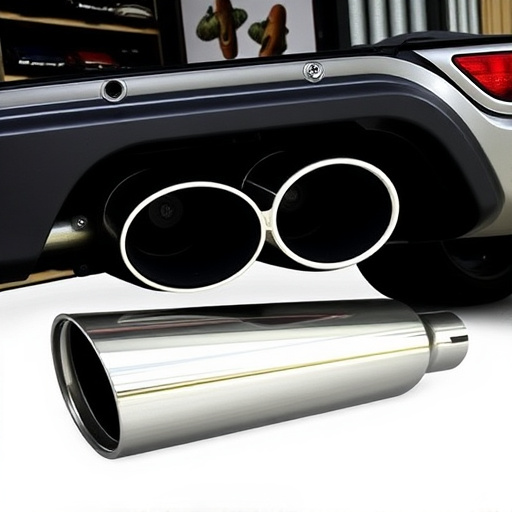
Using a turbocharger system for tuned engines and performance builds offers several key advantages that set it apart from naturally aspirated or supercharged setups. Primarily, turbochargers significantly boost engine power and torque across a wide RPM range, providing a smooth and immediate response at low speeds and continued gains as the revs increase. This results in enhanced acceleration and top-end speed, making them ideal for both drag racing and daily performance driving.
Moreover, compared to superchargers, turbochargers are generally more efficient and produce less heat, which reduces strain on engine components. They also contribute to better fuel economy due to their ability to meter air intake based on demand. With the addition of high-flow muffler tips, custom air filter kits, and performance brakes, a turbocharger system can unlock remarkable performance while offering a more cost-effective and reliable upgrade path for enthusiasts seeking that extra kick in their engines.
Choosing the Right Turbocharger System: Factors to Consider for Optimal Performance
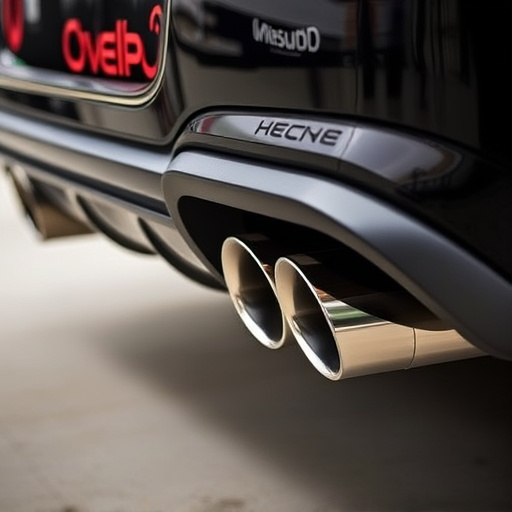
When selecting a turbocharger system for tuned engines or performance builds, several key factors come into play to ensure optimal performance. First and foremost, consider the engine’s make, model, and displacement. Each engine has unique requirements, and a well-matched turbocharger system can significantly enhance power output while maintaining efficiency. The choice of intake components, such as air filters and manifolds, also plays a crucial role in maximizing airflow, which directly impacts the turbocharger’s performance.
Moreover, exhaust systems, including cat back exhaust configurations, should be optimized to reduce backpressure, allowing for smoother gas flow and enhancing overall engine performance. Balancing the right combination of these components – intake, turbocharger, and exhaust – is essential to achieve peak power gains without compromising reliability. Additionally, the turbocharger’s size, compression ratio compatibility, and cooling requirements are vital considerations for durable and efficient high-performance engines.
A turbocharger system is a powerful tool for enhancing tuned engines and performance builds, offering significant advantages such as increased horsepower, improved torque, and superior fuel efficiency. By understanding the basic components and choosing the right setup based on specific needs, enthusiasts can unlock the full potential of their vehicles. Optimizing air intake, managing heat dissipation, and selecting the appropriate turbocharger size are key factors for achieving peak performance. Incorporating a well-designed turbocharger system is a game-changer for those seeking to elevate their automotive experience.








